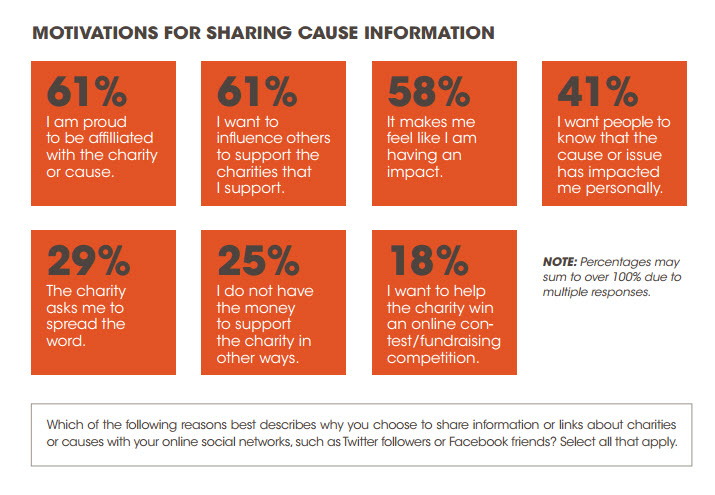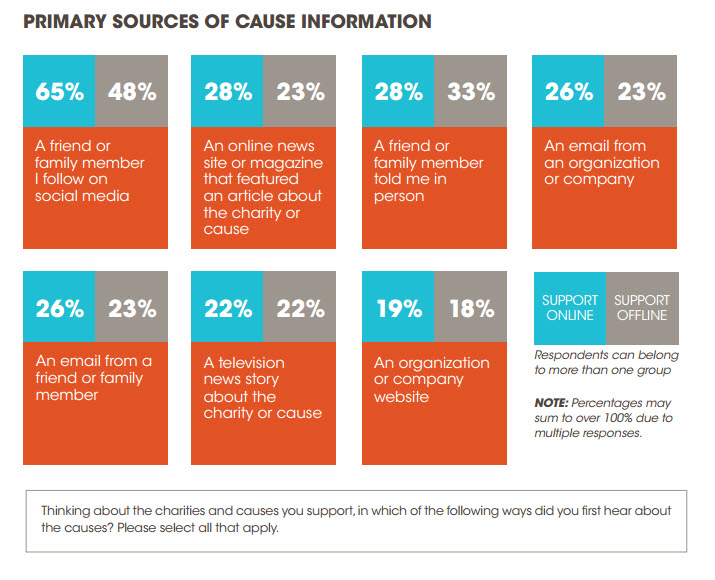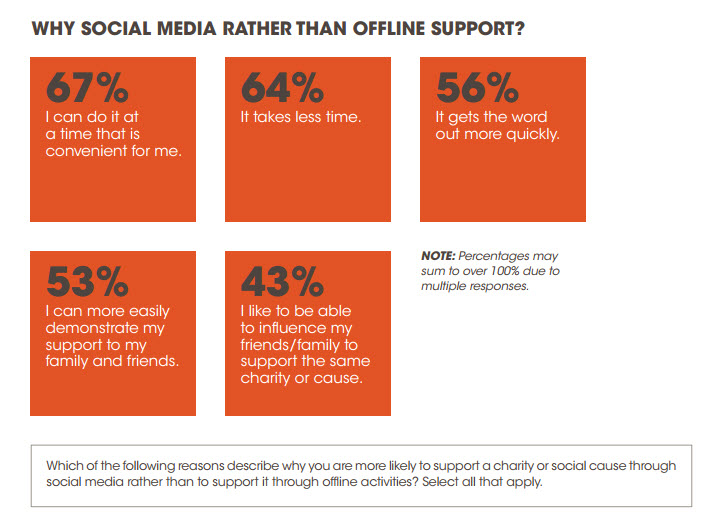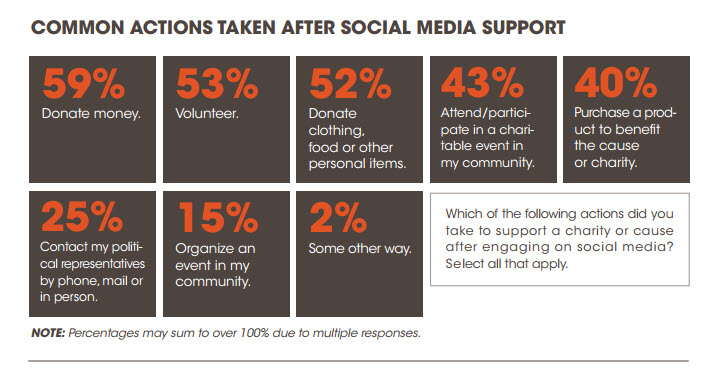Georgetown University’s Center for Social Impact Communication and Waggener Edstrom conducted a study of more than 2,000 adult internet users who support causes and recently released their findings in a report, Digital Persuasion: How Social Media Motivates Action and Drives Support for Causes.
Some key findings include:
- 54% of respondents indicate they are more likely to support a cause through social media rather than offline.
- More than half of survey respondents (55%) who engaged with causes via social media have been inspired to take further action. The most common next steps are donating money (68%), donating personal items or food (52%), attending or participating in an event (43%), and volunteering (53%).
- 76% agree that it’s important to them to influence others to care about the charities and causes they care about.
- Social media is the top way that respondents find out about the causes they support, whether they ultimately support online or offline.
The report includes lots of great infographics and I recommend you check out the full report. Here are a few of the insights they gathered from the report:
1. Social citizens crave influence.
People want other people to care about what they care about.
2. Cause conversion occurs primarily on social media – whether support is online or off.
People are first hearing about charities through social media.
This section of the report also includes an insightful infographic on how supporters use Facebook and why charities get “liked” and “unliked.” Top reason someone unlikes your organization? You post too much, with “unappealing content” and “only asks for donations” coming close behind. Get the full infographic.
3. Perceptions of impact drive behavior.
While the report showed that working with the organization in person made people feel like they were making more of a difference, over half still said they would be more likely to support a cause on social media than in person.
4. Storytelling on social media turns awareness into action.
Posting good content gets those who like you or follow you to do more.
The report also breaks down supporters into four types (Mainstreeters, Minimalists, Moderates and Maximizers) and how each group could be beneficial to your organization.





![12 Things You Can Stop Doing Right Now [Infographic]](https://www.nonprofitmarketingguide.com/wp-content/uploads/2025/01/Stop-Doing-2025-Info-hung-up-500x383.png)




